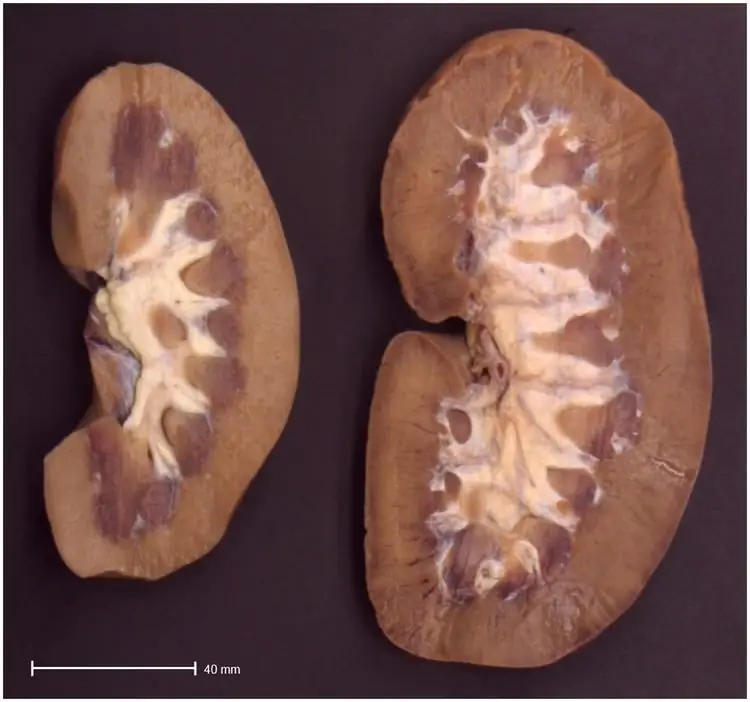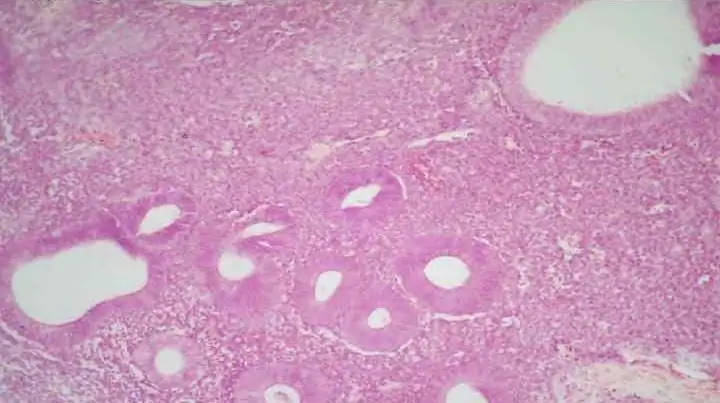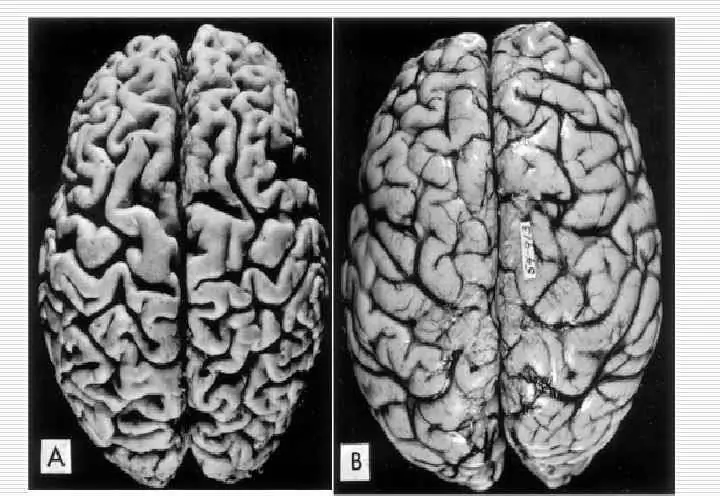- Author Curtis Blomfield [email protected].
- Public 2023-12-16 20:44.
- Last modified 2025-01-23 17:01.
Adaptation of the body to aggressive environmental factors is the main feature that distinguishes viable bionts. Adaptive abilities include the phenomena of heredity, onto- and phylogeny, modification variability. The role of adaptation mechanisms is great, since their insufficient development leads to the extinction of entire species.
What is a compensatory mechanism
In a general sense, such a mechanism is understood as the development of reflex reactions and adaptive changes in the body in response to traumatic factors. These may be the consequences of illness, aggressive environmental influences or mechanical damage.
Protective-compensatory mechanisms are developed to reduce the damaging effects of the disease, acting as a kind of physiological protection. Manifested at all levels: molecular, cellular, tissue.

Adaptive reactions include:
- regeneration;
- hypertrophy;
- hyperplasia;
- atrophy;
- metaplasia;
- dysplasia;
- tissue rearrangement;
- organization.
It is worth considering in more detail the types of compensatory-adaptive mechanisms and their action.
Types of compensatory-adaptive reactions
Regeneration is an adaptation of the body, which consists in the formation of new cells or tissues, instead of dead or damaged ones. Recovery at the cellular level involves the reproduction of cells, at the intracellular level - an increase in cellular structures.
Depending on the causes and mechanisms, regeneration is divided into physiological (constant renewal of epidermal cells or mucous membranes), reparative and restorative (healing of damaged surfaces) and pathological (cancerous changes or tissue degeneration).
Hypertrophy and hyperplasia - a compensatory response of an organ to an increased load, manifests itself in an increase in cell size in the first case, or an increase in the number of cells in the second. Working hypertrophy is often observed in the cardiac myocardium with hypertension, refers to the compensatory mechanisms of the heart.

Atrophy is the process of reducing the size and intensity of the functioning of organs and tissues, the load on which is absent for a long time. So, with paralysis of the lower extremities, there is a noticeable weakening and decrease in the volume of muscle tissue. This mechanism is associated with the rational redistribution of cell trophism: the less energy is required to perform the work of an organ or tissue, the less nutrition tohe does.
Metaplasia is the transformation of tissues into related species. The phenomenon is characteristic of the epithelium, in which the transition of cells from a prismatic form to a flat one occurs. It is also observed in connective tissue. Tumors also appear against the background of metaplasia.
The compensatory mechanism in which the development of cells, tissues or organs goes the wrong way is called dysplasia. There are two types: cellular and tissue. Cellular dysplasia refers to precancerous conditions and is characterized by a change in the shape, size and structure of the cell due to a violation of its differentiation. Tissue dysplasia is a violation of the structural organization of a tissue, organ or part of it, which develops during prenatal development.
Tissue reorganization is another adaptive reaction, the essence of which is structural changes in tissue under the influence of diseases. An example is the adaptive restructuring of the flattened alveolar epithelium, which takes on a cubic shape in conditions of insufficient oxygen supply.
Organization is a substitution reaction of the body, in which a necrotic or damaged tissue area is replaced by connective tissue. A prime example is encapsulation and wound healing.

Phases of protective compensatory processes
A distinctive feature of adaptive devices is the staging of processes. There are three dynamic phases:
- Becoming is a kind of emergency phase, in which there isa sharp release of energy by the mitochondria of the cells of an organ that carries an increased load due to adverse conditions. Mitochondrial hyperfunction leads to the destruction of cristae and subsequent energy deficit - the basis of this phase. In conditions of energy deficiency, the functional reserve of the body is launched, and adaptive reactions develop.
- Relatively stable compensation. The phase is characterized by hyperplasia of cellular structures that enhance cell hypertrophy and hyperplasia in order to reduce energy deficit. If the traumatic factor is not eliminated, most of the cell's energy will be constantly directed to withstand the external load to the detriment of the restoration of intracellular cristae. This will inevitably lead to decompensation.
- Decompensation, when there is a predominance of the processes of decay of intracellular structures over their restoration. Almost all cells in the organ that has undergone pathogenesis begin to break down, losing the ability to repair. This happens because the cells do not get the opportunity to stop functioning, which is necessary for normal recovery. Due to the decrease in normally functioning structures against the background of their constant hyperfunction, tissue hypoxia develops, metabolic changes and, ultimately, dystrophy, causing decompensation.
The development of compensatory reactions is an important part of the adaptive response to the disease. For example, functional disorders of the cardiovascular system led to the emergence of a number of compensatory mechanisms in the body.
Protective adaptive reactions of the heart

Any form of weakening of the heart entails the development of adaptive processes aimed at maintaining blood circulation in the body. There are three main types of adaptations that occur directly in the heart:
- volumetric changes in the heart associated with their tonogenic dilatation - the cavities of the heart and its stroke volume increase;
- changes in heart rate towards acceleration, causing tachycardia;
- hypertrophic changes in the myocardium.
Volume changes and tachycardia develop quickly, unlike myocardial hypertrophy, which takes time to develop. This increases the mass of the heart muscle. Wall thickening occurs in three stages:
- Emergency - in response to the increased load, the functioning of myocardial structures is enhanced, leading to the normalization of cardiac function.
- Relatively stable hyperfunction. At this stage, a dynamic balance of energy production of the myocardium is achieved.
- Progressive cardiosclerosis and exhaustion. Due to prolonged hyperfunction, the mechanical efficiency of the heart decreases.
Besides cardiac compensation mechanisms, there are non-cardiac or extracardiac mechanisms that include:
- increased blood volume;
- increase in red blood cells;
- activation of enzymes that utilize oxygen;
- increased peripheral resistance;
- activation of the sympathetic nervous system.
The listed compensatory mechanisms lead tonormalization of the body's blood circulation.
Mechanisms of adaptive defense of the psyche

In addition to cells, tissues and organs, the human psyche is also subject to adaptive changes. Since the increase in the flow of processed information, the complication of the norms of social life and emotional stress of a significant degree of intensity act as traumatic factors, adaptive processes of psychological defense arise. Among the main compensatory mechanisms for protecting the psyche, there are:
- sublimation;
- repressing desires;
- denials;
- rationalization;
- inversions;
- regressions;
- replacement;
- projections;
- identification;
- intellectualization;
- introjections;
- isolation.
These processes are aimed at reducing or eliminating traumatic factors, which include negative experiences.
The role of compensatory processes in human evolution
Evolutionary changes are perceived by researchers as a consequence of the development of adaptive-compensatory reactions. The compensatory mechanism is the basis of the body's adaptation to changing environmental conditions. All adaptations are aimed at preserving the species as a whole. Therefore, it is difficult to overestimate the role of compensatory processes in the evolution of species.






